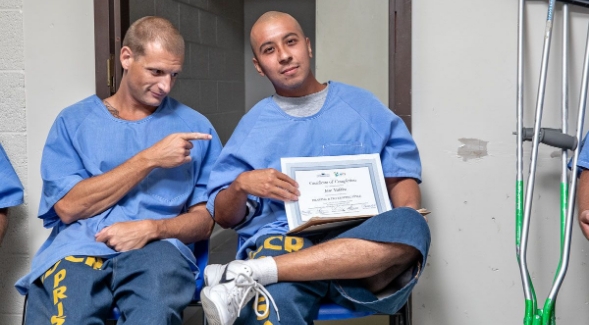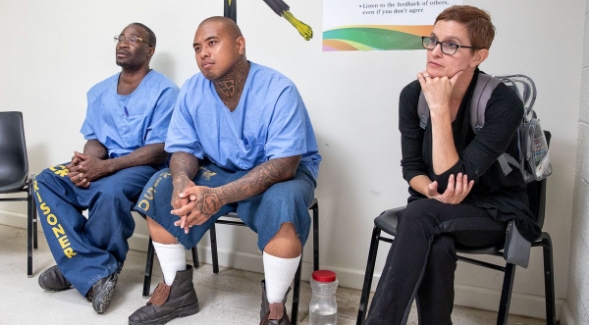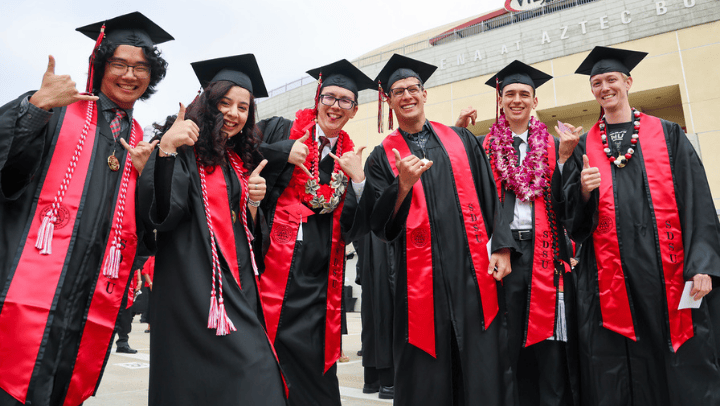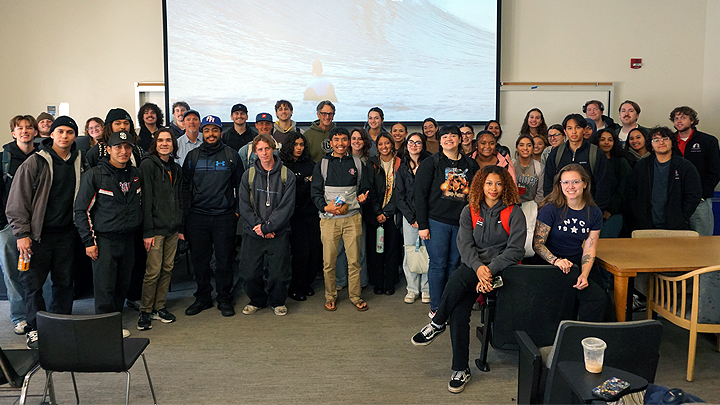SDSU Poised to Join Pell Grant Program Aimed at Fighting Recidivism
Program opens a path to the bachelors degree for people experiencing incarceration in two correctional institutions in the Imperial Valley.

San Diego State University has been invited to participate in a nationwide initiative to reduce recidivism and help incarcerated individuals access federal need-based financial aid to pursue educational programs. The Second Chance Pell Experiment provides Pell Grants for incarcerated individuals enrolled in participating programs.
According to the U.S. Department of Education, the program will expand the number of participating schools to 200. Since its launch in 2015 by the Obama Administration, the initiative has helped more than 7,000 students earn credentials and training.
SDSU is among 73 colleges and universities in the expansion announcement. It was timed to coincide with “Second Chance Month” for formerly incarcerated individuals reentering society, a number that increases by more than 640,000 a year.
The SDSU team, led by Professor Annie Buckley, director of the School of Art and Design, has developed an interdisciplinary degree plan including Art and Design, Journalism and Media Studies, and Communication to support critical thinking, creativity and job development. Plans call for enrolling students at two prisons in Imperial Valley.
SDSU has for years supported individuals impacted by the justice system and worked to reverse the “school to prison pipeline,” most notably through its Center for Transformative Justice, Project Rebound and the more recent statewide collaborative effort, Prison Arts Collective (PAC).
PAC started at CSU San Bernardino in 2013, then relocated its headquarters to SDSU six years later when its founder, Buckley, became director and professor in the School of Art and Design. The program brings creative arts and leadership classes into 12 state prisons across California, and has additional chapters at Cal State Fullerton and Cal Poly Humboldt.
“My SDSU colleagues and I are grateful and excited to join the national movement to expand access to higher education to students experiencing incarceration through this invitation to be part of the Second Chance Pell program,” Buckley said. “We look forward to bringing the interdisciplinary BA degree to students in two prisons in the Imperial Valley region.”

Buckley said the work of the Prison Arts Collective, supported at SDSU by Arts in Corrections funding from the California Arts Council, reflects a commitment from state leadership to expanding educational and rehabilitative programs in prisons, and that she has “also witnessed firsthand the tremendous positive impact that these programs have on people's lives.”
Shortly after coming to SDSU, Buckley met colleagues across campus to discuss participating in the Second Chance Pell Experiment program.
“Along with many colleagues, I have been working toward this goal for a long time,” Buckley said. “We look forward to continuing to collaborate with colleagues in the California Department of Corrections and Rehabilitation and the Community College system to bring this life-changing project to fruition.”
Breaking recidivism
Access to higher education “is a game-changer for people experiencing incarceration,” said Alan Mobley, an associate professor in the School of Public Affairs and the founding executive director of SDSU Project Rebound and the SDSU Center for Transformative Justice. Education, he said, disrupts the recidivism cycle in which individuals released from prison wind up returning after a new arrest or conviction.
“In the past five years, for example, not a single student in Project Rebound, our campus support program for formerly incarcerated students, has returned to prison, while nearly all have earned bachelor’s degrees, and many have gone on to graduate degree programs,” Mobley said. “Nothing surpasses higher education in its potential to transform the lives of justice-impacted individuals and communities.”
Hala Madanat, interim vice president for research and innovation, said SDSU is a good fit for the Second Chance Pell Experiment.
“Becoming part of this program to expand access to higher education is a natural extension of the excellent research, scholarship and creative activities of our faculty – many of whom have for years worked with incarcerated and formerly incarcerated individuals to reduce recidivism, celebrate the arts and develop pathways to higher education,” Madanat said.
Loan assistance
The Department of Education is also making changes to policies to help incarcerated student loan borrowers who missed payments or are in default.
“The expansion of Second Chance Pell and these new pathways out of default are critical steps for incarcerated individuals to be able to access educational opportunities that will provide second chances to build a future,” said Secretary of Education Miguel Cardona.
“Previously, incarcerated individuals interested in enrolling in the Second Chance Pell Experiment were twice as likely as the broader population to be turned away because they had defaulted loans,” the department said in a release.
SDSU and other newly participating institutions will be partnering with federal and state prisons to enroll incarcerated students as early as July 2022.



